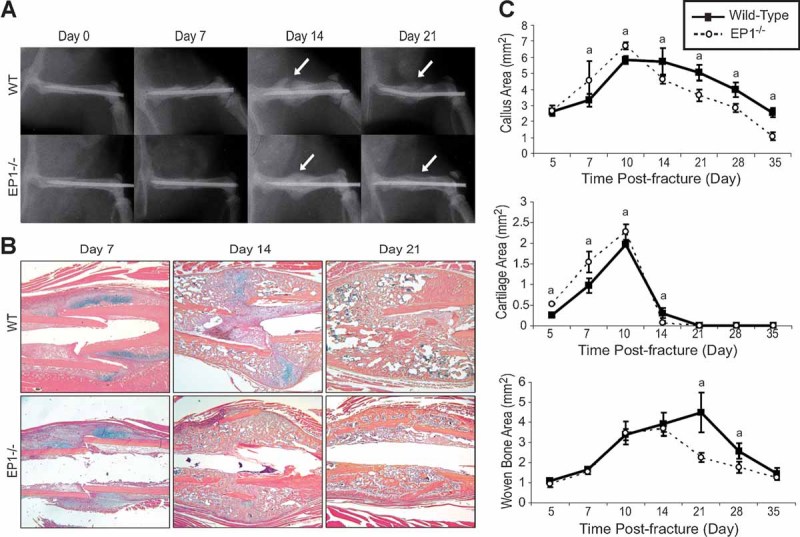Fig. 1.

EP1−/− fractures exhibit accelerated mineralization. Femur fractures were created in 10-week-old EP1−/− mice and wild-type (WT) controls. Fractured femurs were harvested at 7, 14, and 21 days after fracture. Representative radiographs of fractured femurs demonstrate the increased mineralized callus in EP1−/− mice on day 14 compared with the soft callus in wild-type fractures (arrows) (A). Accelerated remodeling on day 21 in EP1−/− fractures is evident from the contracted callus versus the broad callus that remains in wild-type fractures (arrows). Representative histology (40× original magnification) of fractured femurs stained with alcian blue hematoxylin/orange G eosin show cartilage (blue) and bone (orange) formation (B). Histomorphometric measurements (total callus area, cartilage area, woven bone area) were made from 12 sections for each group (n = 4 mice/group) (C), and the results are shown as mean ± SEM. Statistical significance was assessed by two-way ANOVA followed by Dunnett's test; a indicates p < .05 compared with wild-type.
